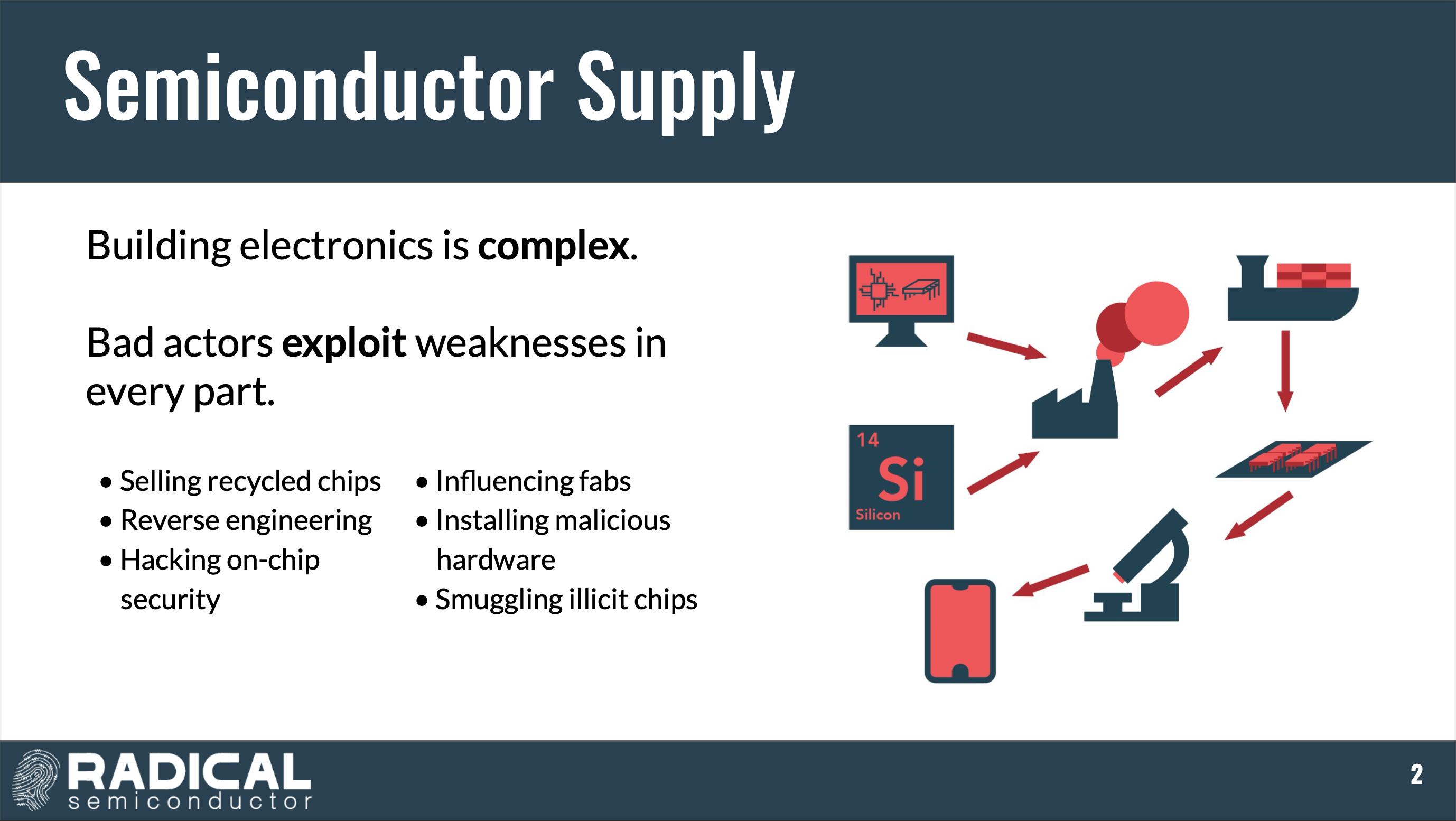Identity Review | Global Tech Think Tank
Keep up with the digital identity landscape.
Most 22-year-olds are finishing up their last year in college, looking for their first job in an economy that has been upended by COVID-19, and maybe trading some Dogecoin.
Sean Hackett, Zach Belateche and Chandler Watson have set their sights quite a bit higher: they have teamed up to make electronic chips unhackable by quantum computers.
Hackett, Belateche, and Watson are the three co-founders of Radical Semiconductor, a startup in the cybersecurity and cryptography space. The trio met at Stanford. Hackett, the CEO of Radical Semiconductor, and Watston, the Cryptography Lead, are still finishing their degrees.
Identity Review had a chance to interview the three co-founders and discuss how they came up with the idea to create a more secure chip, the state of the current business, and what it’s like to raise money for a startup while still in school.
The idea behind Radical Semiconductor was born from Belateche’s experience with the Brains in Silicon Lab at Stanford, which focuses on neuromorphic computing, a field that attempts to simulate the human brain using analog circuitry to mirror biological structures.
“We had this insanely low power, really efficient, really small chip [at the lab],” said Belateche. “And I saw that analog computing had so many applications outside of neuromorphic space.”
Belateche, then a junior at Stanford, knew Watson, a sophomore, from the Stanford Space Initiative. The two discussed analog computation in Stanford’s “Space Basement” behind the engineering school. The pair decided to spend the following summer writing simulators for analog circuits that solved non-linear problems in fluid dynamics.
At the end of the summer, Belateche and Watson came to Hackett looking for a CEO.
“Despite not having 100% the super deep engineering skillset,” said Hackett, an economics and physics major at Stanford, “I have an ability to talk about what we’re doing at a pretty high level, and I sort of naturally became the front man.”
With the team, algorithm and approach in hand, the group settled on cybersecurity as the perfect area where analog computation’s advantages over digital—namely, its ability to do certain math operations at extremely fast speeds—could disrupt the industry.
“We found that our approach would accelerate solving particular algorithms called post-quantum secure algorithms, encryption algorithms that can’t be broken by computers. We’d be able to build those algorithms with a thousand times less power, and our algorithms would be faster and more secure,” said Hackett.

Source: Radical Semiconductor’s pitch deck
The specific problem that Radical Semiconductor solves is making chips more secure. Mid-tier chips, the company’s focus, represent a huge chunk of the global chip market, driving performance of technology as diverse as military ships, thermostats or the power grid.
EET Asia estimates that $169B of counterfeit chips are currently intermixed in the global chip supply. The presence of counterfeit chips often has national security implications. In 2017, the U.S. government seized 5.6M counterfeit chips that were designed to infiltrate military equipment and vehicles.

Source: Radical Semiconductor’s pitch deck
The startup is tackling this challenge by producing unique ID tags that are integrated into chips as they are built. These ID tags are unclonable and can’t be removed from the chip. They have two provisional patents outstanding: one for their underlying cryptography system and one for their analog design.
Radical Semiconductor’s design not only allows companies to track, verify, and protect their chips from fraud, but it also protects against future quantum computing threats. Hackett told Identity Review that giving the length of time chips are in the system, companies need to start planning ahead now.

Source: Radical Semiconductor’s pitch deck
“Many of the chips on the networks are going to last longer than 10 years, or even 20 years. Modern cryptography is based on RSA, and a quantum computer can provably break that system very easily. That means government secrets could be accessed. You can build an impenetrable network now so that when the threat does come up, you can be rest assured your secrets will be safe, whether you are a government, bank or just someone holding onto a data center.”
Right now, Radical Semiconductor is raising outside funding, including from non-dilutive grants and venture capital firms. The team wouldn’t disclose who they were talking to but did say they have “some pretty reputable names interested so far.”
That’s all pretty normal for a startup with lofty ambitions, until you remember that all three co-founders are 23 or younger.
When I asked Hackett (who was my freshman quadmate at Stanford) how he balanced running a startup while still in school, he offered a short response: “It’s a real grind.”
However, Hackett argues that being students has actually been quite beneficial to the startup. “Some of the biggest people we’ve spoken to that have helped us the most are Stanford professors. We would not be able to do that as effectively if we were graduated,” said Hackett. “Chandler’s research in algebraic geometry is also directly relevant to our algorithms. If we were not in school, we would have to be learning it anyway.”
The startup plans to participate in the NSF I-Corp this summer, a deep tech accelerator run by the National Science Foundation, and has already completed the Cardinal Ventures accelerator and StartX Student-In-Residence program at Stanford.
Hackett told us that Radical Semiconductor’s vision is to “produce the most secure identity on a chip that can’t be hacked, stolen or cloned.” We will be monitoring their progress on this front in the years to come.
ABOUT THE WRITER
Quinn Barry is a Tech Innovation Fellow from Stanford University covering innovations in digital privacy across finance and government.
Contact Quinn Barry at quinn@identityreview.com.
Do you have information to share with Identity Review? Email us at press@identityreview.com.